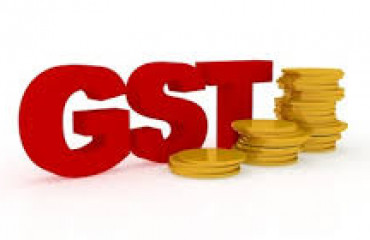
India’s Parliamentary Standing Committee on Commerce has recommended setting up a RoDTEP council, along the lines of the GST Council, to review refund rates under the Centre’s Remission of Duties and Taxes on Exported Products (RoDTEP) scheme for exporters and lay out “a road map for short- and medium-term changes in rate structure." The RoDTEP window was opened on 1 January 2021 to reimburse exporters for various levies without falling afoul of World Trade Organization (WTO) rules that forbid export subsidies deemed distortive of trade flows. It replaced the Merchandise Exports from India Scheme, which had to be axed after the WTO barred its use as a prop (on a specific US objection), and looks set to subsume RoSCTL, short for Rebate of State and Central Taxes and Levies, a similar package focused on apparel and other such exports. But the fact that RoDTEP coverage has been controversial and rates are being flagged for revision should worry us that it is slipping the GST way—i.e., down a path of proliferation with items sliced and slotted apart too finely.
India's Parliamentary Standing Committee on Commerce has recommended setting up a RoDTEP council, along the lines of the GST Council, to review refund rates under the Centre's Remission of Duties and Taxes on Exported Products (RoDTEP) scheme for exporters and lay out "a road map for short- and medium-term changes in rate structure." The RoDTEP window was opened on 1 January 2021 to reimburse exporters for various levies without falling afoul of World Trade Organization (WTO) rules that forbid export subsidies deemed distortive of trade flows. It replaced the Merchandise Exports from India Scheme, which had to be axed after the WTO barred its use as a prop (on a specific US objection), and looks set to subsume RoSCTL, short for Rebate of State and Central Taxes and Levies, a similar package focused on apparel and other such exports. But the fact that RoDTEP coverage has been controversial and rates are being flagged for revision should worry us that it is slipping the GST way—i.e., down a path of proliferation with items sliced and slotted apart too finely.
RoDTEP follows the logic that products free of domestic tax burdens will be that much more competitive in export markets. India's GST system lets exporters claim input credits, while custom duties on imported raw materials can be defrayed with relief sought from India's advance-authorization and duty-drawback windows. As these entail elaborate processes, their cost-relieving effects are no match for a low-tariff regime in general, but they are nonetheless part of our official effort to cheapen local production for a better shot at global markets. RoDTEP was designed to refund export units that shell out money on various other central and local levies, like fuel excise duties, mandi-level and value-added taxes, coal cess, etc. But, like other such interfaces of the government with private parties, it's not just riddled with complexity, but a constant work-in-progress. Take eligibility. In its first year of operation, RoDTEP had about 8,730 eligible items under it. This list has recently been enlarged to cover 10,342 items, with pharmaceutical, chemical and steel export products among the notable inclusions. The scheme's refund rates vary in a range of 0.5% to 4.3% of an export item's freight-on-board value, with unit-price caps acting as item-wise limits on grossly inflated claims. Refunds are awarded in the form of 'e-scrips', which are credits in a ledger run by the Central Board of Taxation and Customs that can be transferred or used to settle custom bills. Clever as such a scrip system is, it still costs the exchequer money; ₹14,245 crore was earmarked for it by this fiscal year's Union budget.
Last August, a commerce ministry notification had said that "residual issues" of RoDTEP would be taken up by an inter-ministerial panel chaired by the directorate general of foreign trade (DGFT). The parliamentary panel's proposal of a RoDTEP council suggests that many more close calls need to be taken than anticipated. Rate lists issued by the DGFT offer a glimpse of what refund reviewers would be faced with. Shipments of Atlantic and Danube salmon can claim 2.5% of their on-board value so long as the latter is no greater than ₹16 per kg, for example, but exports of Pacific salmon can ask for only 0.5%, with no cap specified. This sort of micro multiplicity has marked Indian policies for so long that a push for easy-to-recall simplicity can feel like an upstream challenge. But then, real economic reforms are invariably harder to conceive and see through.
